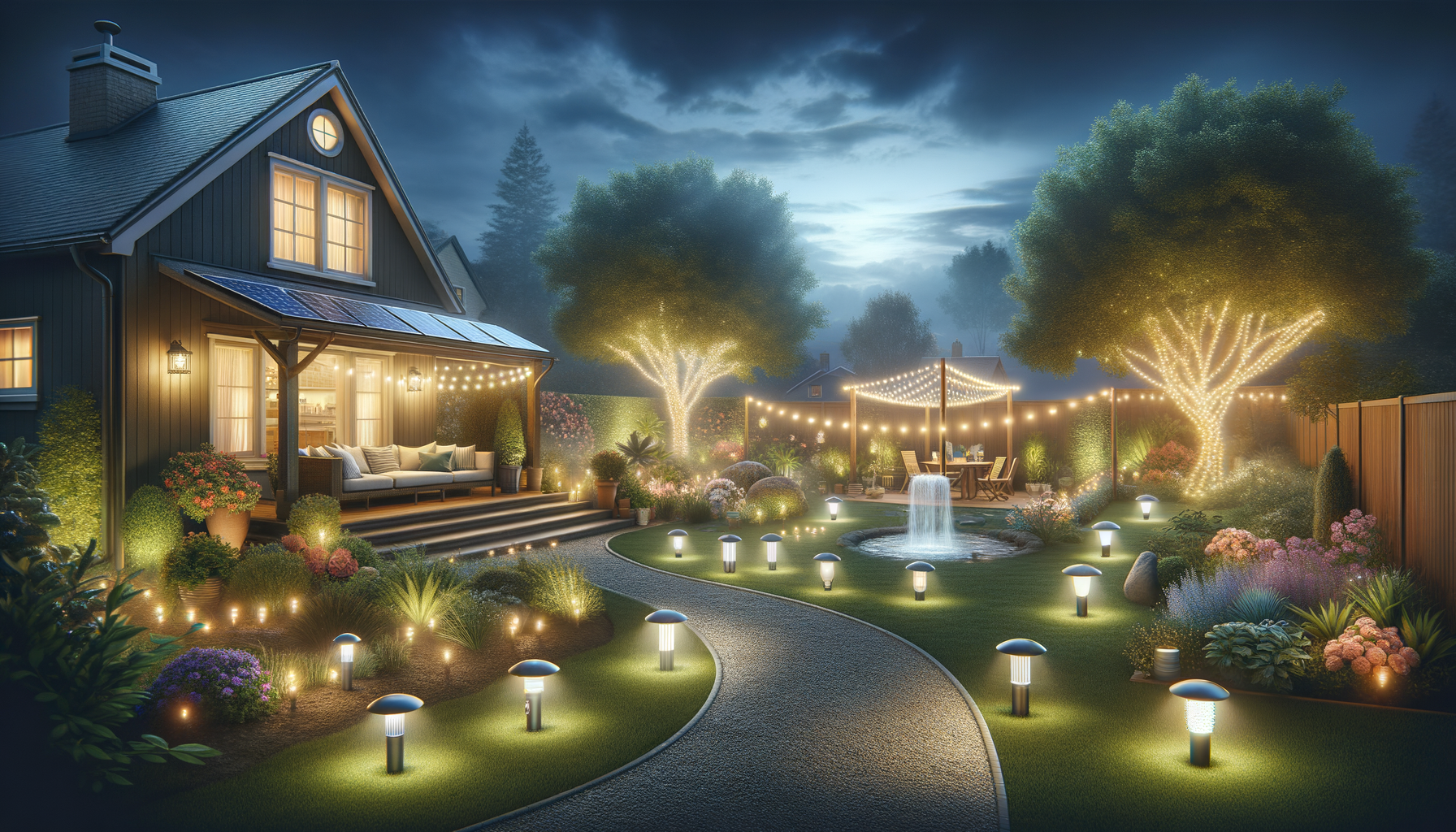Brighten Up Your Evenings: 7 Smart Outdoor Lighting Solutions for Any Yard
Introduction to LED Lighting In the modern world, lighting is not just about illuminating spaces but also about creating ambiance, ensuring energy efficiency, and enhancing safety. LED lighting has emerged as a revolutionary technology in this domain, offering numerous advantages over traditional lighting solutions. As we delve into the world of LED lighting, we will

Introduction to LED Lighting
In the modern world, lighting is not just about illuminating spaces but also about creating ambiance, ensuring energy efficiency, and enhancing safety. LED lighting has emerged as a revolutionary technology in this domain, offering numerous advantages over traditional lighting solutions. As we delve into the world of LED lighting, we will explore its importance, the science behind it, and how it can be an excellent choice for various applications.
LED, or Light Emitting Diode, lighting has transformed the way we think about lighting. Unlike incandescent bulbs that use a filament, LEDs use semiconductors to emit light, making them more energy-efficient and longer-lasting. This shift from traditional lighting to LED is not just a trend but a necessity driven by environmental concerns and the need for sustainable energy solutions.
LED lighting is particularly relevant today as it aligns with global efforts to reduce carbon footprints and energy consumption. With the ability to last up to 25 times longer than traditional bulbs and consume significantly less power, LEDs are paving the way for a greener future. Let’s explore the various facets of LED lighting and understand why it is becoming a preferred choice for many.
The Advantages of LED Lighting
LED lighting offers a multitude of benefits that make it a superior choice for both residential and commercial applications. One of the most significant advantages is its energy efficiency. LEDs consume up to 80% less energy compared to traditional incandescent bulbs, which translates to lower electricity bills and reduced environmental impact.
Another notable benefit is the longevity of LED lights. Traditional bulbs typically last around 1,000 hours, whereas LEDs can last anywhere from 15,000 to 50,000 hours, depending on the usage and quality. This extended lifespan means fewer replacements and less waste, contributing to sustainability efforts.
LEDs also offer unparalleled versatility in terms of design and application. They are available in a wide range of colors and can be easily integrated into various fixtures and designs. This flexibility allows for creative lighting solutions that can enhance the aesthetic appeal of any space.
Moreover, LEDs are environmentally friendly as they do not contain harmful substances like mercury, which is commonly found in fluorescent lighting. This makes disposal easier and safer for the environment. Additionally, LEDs produce very little heat, reducing the risk of burns and making them safer to use in homes and offices.
In summary, the advantages of LED lighting include:
- Energy efficiency
- Long lifespan
- Design versatility
- Environmental friendliness
- Safety
These benefits make LED lighting a compelling choice for those looking to upgrade their lighting systems.
Applications and Innovations in LED Lighting
LED lighting has found applications in a wide array of settings, from residential homes to large-scale commercial projects. Its adaptability and efficiency make it ideal for various uses, including outdoor lighting, indoor illumination, and specialized applications like grow lights for plants.
In residential settings, LED lights are used for everything from accent lighting to general illumination. They are perfect for creating mood lighting in living rooms, enhancing the ambiance of kitchens, and providing focused lighting in workspaces. The ability to dim LEDs adds another layer of customization, allowing homeowners to adjust lighting levels to suit different activities and times of day.
Commercial applications of LED lighting are equally impressive. In offices and retail spaces, LEDs provide bright, consistent lighting that enhances visibility and productivity. They are also used in signage and displays, where their vibrant colors and clarity can attract attention and convey messages effectively.
One of the most exciting developments in LED lighting is its use in smart lighting systems. These systems allow users to control lighting remotely via smartphones or voice commands, offering convenience and energy savings. Smart LEDs can be programmed to change colors, dim, or turn off at specific times, contributing to energy conservation and personalized lighting experiences.
Innovations in LED technology continue to push the boundaries of what is possible. Advances in color rendering and efficiency are making LEDs even more appealing. The integration of LEDs with solar power systems is another promising development, offering sustainable lighting solutions in areas with limited access to electricity.
In conclusion, the applications and innovations in LED lighting are vast and varied, making it a dynamic field with endless possibilities. Whether for personal use or large-scale projects, LED lighting offers solutions that are both practical and forward-thinking.